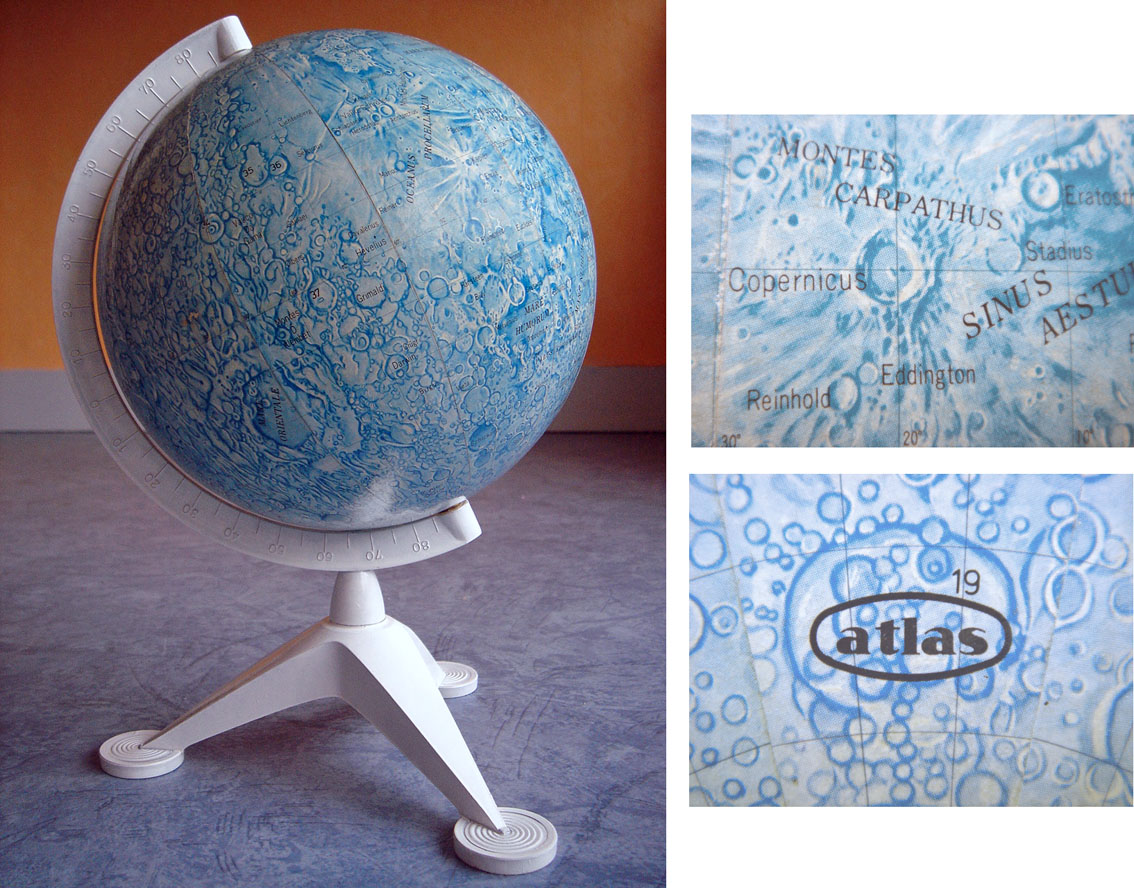
image by Danny Caes, Ghent-Belgium
Globes are magical miniature instantiations of heavenly bodies. With a globe you can physically hold a world in your hands and rotate it east to west or north to south to see regional and global relations between major surface features. With a lunar globe you can unscrunch the normal perspective of a limb basin simply by centering your view over it. If you want to see what the Leibnitz Mountains really are you peek around to the farside and see that those polar peaks are just the rim of the huge South Pole-Aitken Basin. And the globe helps you evaluate if the Serenitatis ray really could have come from Tycho, or Menelaus or some other crater just over the northern limb. The problem with lunar globes is there aren’t enough of them. The most widely available is the Sky and Telescope one which is accurate but boring. What’s fun is stumbling across lunar globes you didn’t know about. And Danny Caes has been harboring one since his parents gave it to him in 1979 or 80. The globe itself is about 15 cm in diameter and the overall height is about 25 centimeter. Its only identification is the stamped on name ATLAS. Only Tsiokowsky is labelled on the farside and the craters there aren’t as clearly depicted as ones on the nearside. We hope some other moonglobe-connoisseurs will be able to tell us more in the comments below about this little globe.
Related Links:
More globes
Yesterday's LPOD: Which Came First?
Tomorrow's LPOD: Deep, Young and Ashy
COMMENTS?
Register, and click on the Discussion tab at the top of the page.
Contributions to http://www2.lpod.org/ are licensed under a Creative Commons Attribution No-Derivative-Works Non-Commercial 3.0 License. 



